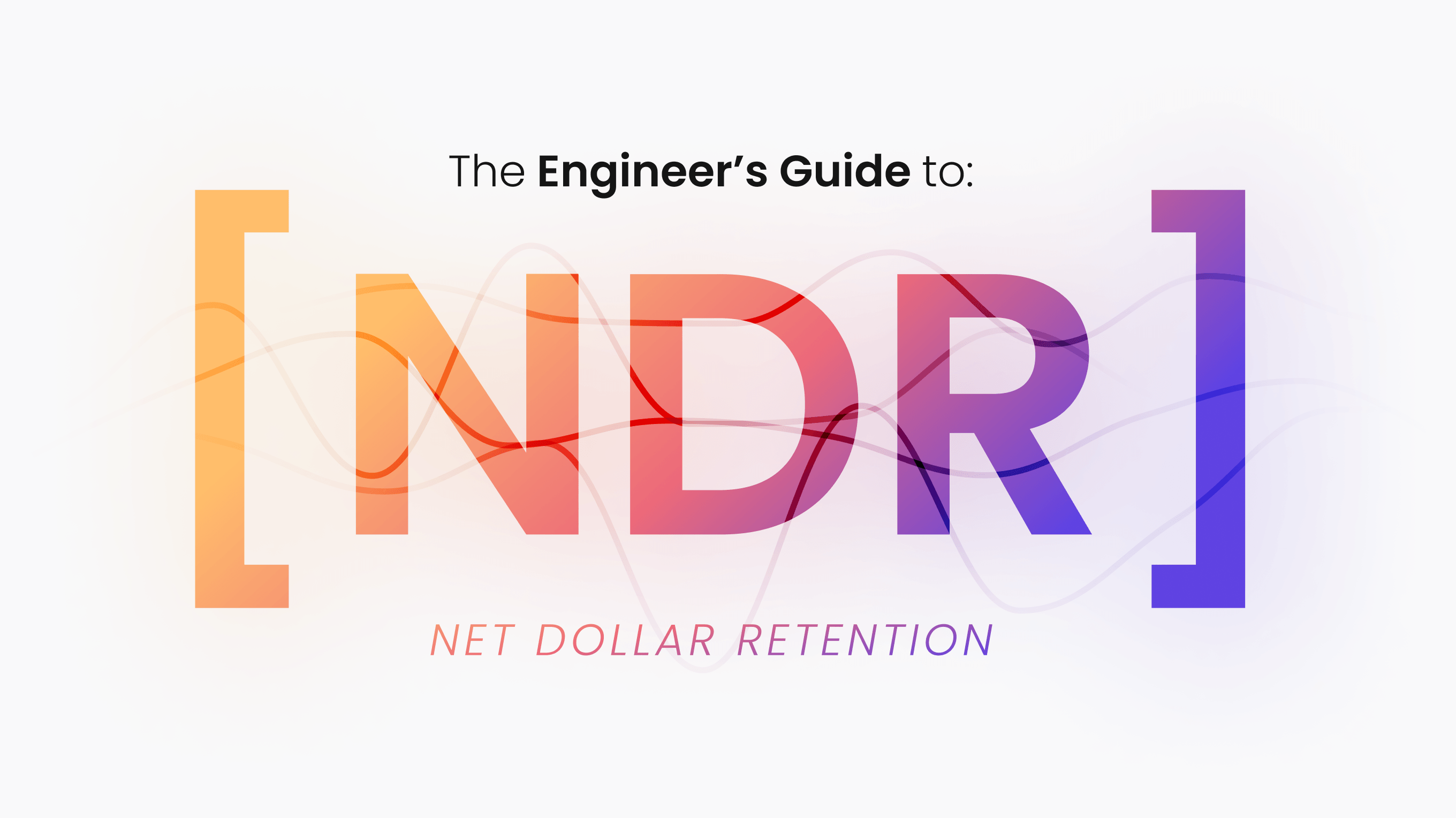
Net Dollar Retention (NDR) is a method of measuring your businesses effectiveness at retaining and growing with existing customers. When customers decide to use your product/s, keeping them for the long haul is the goal. There are many ways to do this – product improvements, launching additional products that bring value, launching new features, fixing issues and focusing on customer success.
In this guide, we will go over some of the basic concepts involved in NDR, including what NDR is, how it is calculated, what is a good NDR score and how do you maintain and/or improve your NDR score. What is Net Dollar Retention (NDR)?
Net Dollar Retention (NDR) is an important concept that is rapidly gaining traction within the tech community. It is a metric that is used to measure a company’s ability to retain and grow its revenue from its existing customer base within a given period of time, typically one year. Unlike some of the other revenue metrics that you’ve probably heard about, for example, Annual Recurring Revenue (ARR) or Churn Rate, NDR measures the amount of revenue a company retains and expands from its existing customers, adding in any gains from upsell or cross-sell efforts, and removing any losses from customers who churn or downgrade.
To keep up-to-date with the newest episodes, follow us on Spotify. NDR is related to the concept of retention but is measured as a percentage using revenue metrics to clearly show if your customer base is growing or shrinking over time. As we all know, acquiring customers is much more expensive than retaining them, so knowing your NDR is a helpful way to keep an eye on the health of your existing customer base and therefore, can also give guidance as to whether you should prioritize a strategy to strengthen and retain your base.
If you are mathematically inclined, which many of us are, you will want to start with the equation first:
NDR = ((Revenue from your customer cohort from the first 12 months + Expansion revenue from the same cohort from the second 12 months - Downgrades or contractions of revenue from the same cohort from the second 12 months - Churned revenue from the same cohort from the second 12 months) / Revenue from the same cohort from the first 12 months) x 100.
Now we need to talk about time ranges for the calculation. To measure your year-over-year retention, you should look at the last 24 months of your customer data. You will want to compare the first 12 months of data to the second 12 months of data in your 24-month time range to measure the percentage change. What we are aiming for and hoping for is a result that shows percentage growth. It’s important to note that to calculate NDR, you have to focus on a specific cohort of customers and its ARR because the main goal is to measure revenue retention of a customer cohort at a year-over-year level.
Now on to the calculation…looking at your 24-month data set, first you need to sum up your customer cohort’s revenue for the first 12 months (its ARR) and then add to it any expanded revenue gained from the same customer cohort from the second 12 months. Then you subtract any contracted and churned revenue from the same customer cohort from the second 12 months. After that, you divide that total revenue number that you just calculated by the original revenue number from your customer cohort from the first 12 months (its ARR). Lastly, you multiply that number by 100. This will give you your NDR as a percentage.
We have all been in those meetings where the executive leadership team starts talking about the company’s metrics…and what do we all do? We glaze over, start checking our emails, and resopnd to slacks. I get it! These metrics are super boring, and we don’t think we need to care about them as they don’t affect us. But they actually do affect us! So, it is important to learn more about my these metrics as they can be very helpful for us and our company in many ways.
At the very least, it is very important for companies to know their NDR as it is the leading metric for executives, investor, and analysts to identify the health and viability of a company. A high NDR indicates how effective a company is at retaining and growing its revenue from its current customer base. For example, if a company’s NDR is 120%, revenue from its existing customers will grow by 20% - which is the 20% over the 100%. Also, a high NDR can be an indicator that a company’s customer satisfaction is high, and loyalty is strong. On the other hand, a low NDR could suggest that a company is struggling to generate additional incremental revenue from its current customers and retain them.
Furthermore, knowing your NDR becomes an important factor in forecasting your revenue growth trajectory. Using the example from above, if you want to grow revenue by 40% and your NDR is already 120%, you will need an additional 20% revenue growth from new customer acquisition.
Lastly, knowing a company’s NDR is also beneficial to its employees and prospective employees. Interestingly, companies are seeing an uptick in candidates who are asking prospective employers for their NDR score so that they can better evaluate the financial health of the company and make more educated employment decisions around the longevity of the company they may join.
So, what is a good NDR for a SaaS company? Over 120% is considered a good score for a B2B SaaS company. There is some debate on this, but ultimately it depends on your company’s results. For example, if your NDR is 130% and it drops to 120% this can trigger a valuation decline. So, to be able to show any growth from your existing customer base, your NDR must be over 100%. Why is NDR Specifically Important Right Now?
In a slow economy we start to see a deceleration in the growth of net new businesses. That coupled with the rule of big numbers: the bigger a company’s revenue number gets, the harder it will be to maintain growth rates, and therefore companies have to go back to their current customer base and stimulate revenue expansion through upsell and cross-sell efforts.
We are experiencing this right now. The economic climate is really tough right now, and it is affecting companies and people in very different ways. On top of that, tech is really struggling right now, and these companies are having to really dive into their metrics and shift their business strategies from trying to grow through net new acquisition to looking inward at what is already there and viable and strengthen the bonds that they have with their current customers.
There are 3 main drivers that could increase your NDR: upsell opportunities, cross-sell opportunities, and churn reduction.
UPSELL: is the process of getting more revenue from a single product. For example, creating higher pricing tiers for more usage.
CROSS-SELL: is selling additional products to your existing customer base. By aligning your product roadmap to your customer needs, you have a better chance of selling to your customers.
CHURN REDUCTION: is the process of identifying and plugging leakage points in your customers’ lifecycle. Although they are not the only factors, making successful improvements to the 3 drivers above should help increase your NDR score.
